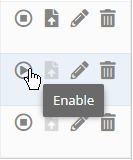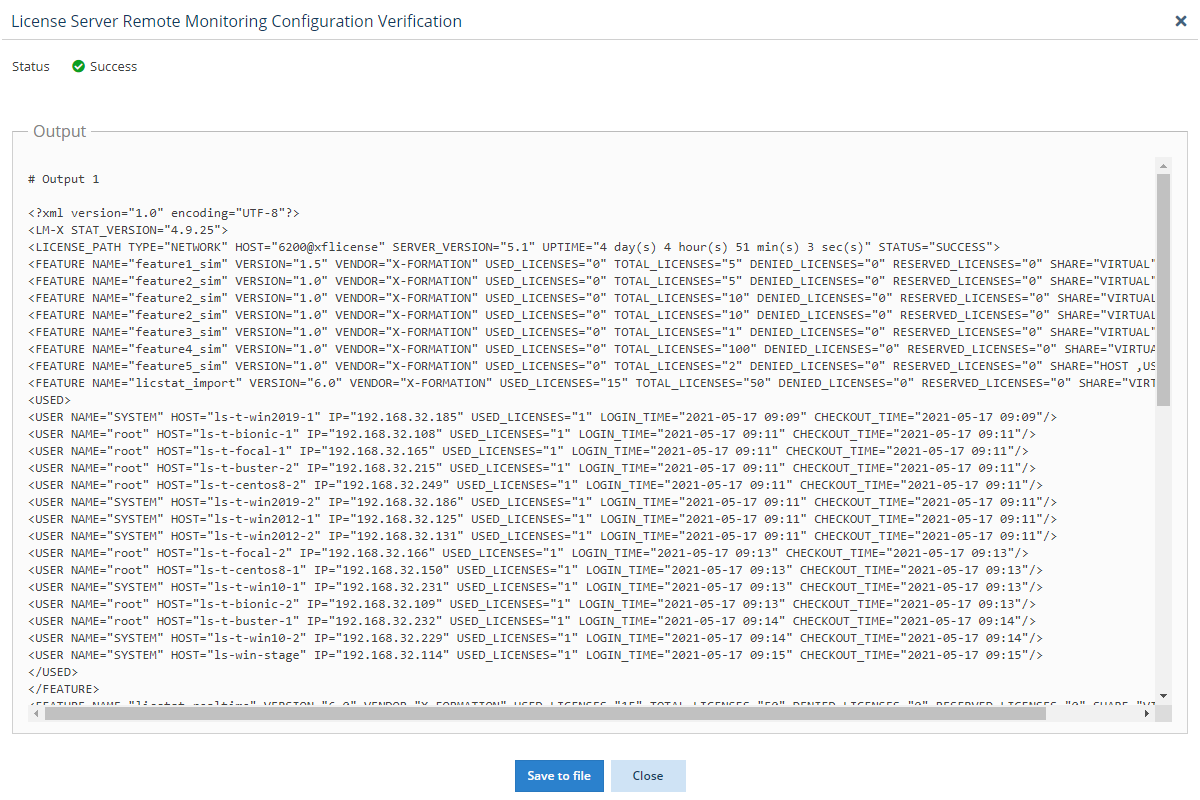...
| Column Name | Description | ||||||
|---|---|---|---|---|---|---|---|
| License Server | The display name for the license server. | ||||||
| License Server ID | The ID of the license server. | ||||||
| License Server Description | The optional user-defined description for the license server. | ||||||
| License Manager | The license manager type (can be any supported license manager or a custom license manager). | ||||||
| Host | The hostname of the license server. If the license server is configured to be redundant (three servers are used) this is the hostname of the main license server. | ||||||
| Port | The port to use for the license server. If the license server is configured to be redundant (three servers are used) this is the port for the main license server. | ||||||
| The status of the license server for each applicable data source, including Remote, Import, and End User (e.g., Agents). You can hover over each data source status to see its details, including Last Update Time and, for "Failure" status, the relevant error message. For detailed information about license server status, see License Servers. | ||||||
| Enabled | Indicates whether monitoring is enabled for the license server. A toggle in the Action column indicates the enabled status and allows you to enable/disable the license server as needed. | ||||||
| Last Update Time | Indicates the time the data for the license server was last updated for all data sources. A status of "Never" indicates that the server was created but doesn't have any data yet (for example, the server has not yet had its first query or it was disabled before it was queried for the first time, or it was never imported). | ||||||
| Query Interval | Indicates the time interval (in minutes) between queries. | ||||||
| Redundant | Indicates (Yes/No) whether the license server is redundant. | ||||||
| Feature Versioning | Indicates (Yes/No) whether Feature Versioning is enabled for the license server. | ||||||
| Anonymization | Indicates (Yes/No) whether use of anonymous usernames/hostnames is enabled for the license server. |
...
- To edit an existing license server, click the Edit icon in the Action column of the License Servers grid row for the license server you want to change. An Edit License Server dialog opens to allow you to change the existing settings for that license server.
or
To add a new license server, click Add at the bottom of the License Servers grid. An Add New License Server dialog opens to allow you to configure the new license server. - The dialog will contain tabs for General information and for each data source that is applicable to the license server type (Remote Monitoring, Importing, and/or End User Monitoring). Complete the information in the Add New/Edit License Server dialog as described below in "License Server settings."
Remote Monitoring allows verifying the license server configuration manually.Anchor remote_monitoring remote_monitoring
If you would like to verify the configuration, click Verify at the bottom of the Remote Monitoring tab. (This step is not necessary; the configuration will automatically be verified when you save the license server, as described in the next step.)
Verification may take a long time depending on the license manager’s response time, and the status will show that the server is being verified. The verification results will include the status (success or failure), the reason for the failure if verification failed, and the query tool output. The output should look similar to the following.
You can use Save to File to export and save the data to a file; for example, X-Formation Support may request this file for troubleshooting.- After completing all settings as needed, click Save or Save and Close to save the license server. You can click Close at any time if you do not wish to save your changes.
...

